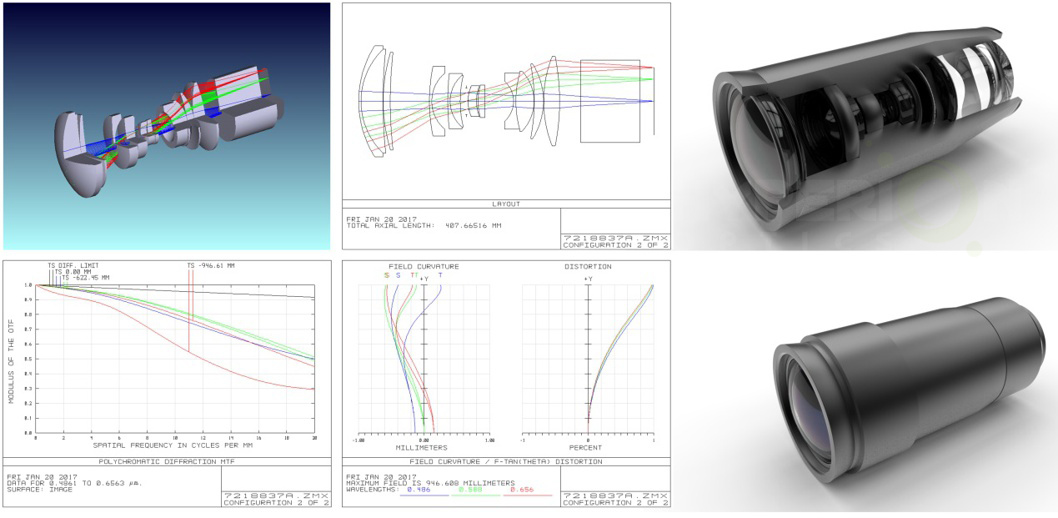
Projection lens and photographic lens is a pair of opposite lenses, the camera lens is used to image the outside world to the CCD or COMS in the digital format, on the other hand the projection lens to digital format images projected onto the screen.
From the optical design point of view of these two lenses are no different, because the optical path is reversible. However, they still have some differences. First, the photographic lens is generally iris adjustable diaphragm, which control in the photography industry is known as the aperture. Projection lens generally in order to maximize the output illumination, aperture stop is not adjustable.

Second, the projector lens is generally fixed focus lens, even zoom lens projectors, the zoom ratio is generally not greater than 2, consumer digital camera zoom ratio are normally more than 3, only the SLR digital camera with fixed focus Lens or a lens with a zoom ratio less than 3.
Third, the lens of different caliber, projection lens diameter is generally much larger than the camera lens.
At Hyperion Optics we develop projection lenses as following:
In addition to that there is a ball screen lens, it is a single lens shot surface

We can design and produce high performance projection lens, the maximum resolution of up to 4K, projection ratio can reach 0.8: 1, which means that the distance of one meter projection of 60-inch screen.
The following table shows the relationship between the projection ratio and the focal length
|
Lens Type |
Super Short Focus |
Short Focus |
Mid Focus |
Telephoto |
Ultra long focal length |
|
Projection ratio |
<1.2:1 |
1.2-2.0:1 |
2.0-2.6:1 |
2.6-5.0:1 |
>5.0:1 |
Now, with the increasing proportion of widescreen video, deformation projection lens has gradually begun to penetrate into the market. Compared to traditional projection lens + deformation lens, the deformation projection lens structure is more compact, better image quality, lower prices.
We have a wealth of experience in design and manufacturing, and we can make performance / price balance designs based on different chip sizes, resolutions, and projection ratios.
F is the euphotic index of the lens. The larger the aperture f (the smaller f), the larger the euphotic index of the lens. If a lens sets multiple aperture, the larger the numerical value of aperture, the smaller the aperture, and the less of the luminous flux.
The focal length of the lens determines the shape of the lens that can be imaged when the projector and the screen are in a certain distance. The focal length F is also expressed numerically, usually from 50-210, which is divided into short focus, standard and long focus, as well as super short and super long focus. The smaller the focal length, the shorter the focal length, the larger the numerical value, and the longer the focal length. The projectors' requirements for the focal length of the lens are generally 50-140, and the rear projection spacing is generally around 35. The focal length determines the distance between the projector and the shadow screen when the full size is preset. The shorter the focal length, the closer the projector and shadow screen.
1. Autofocus and manual focus
2. Manual adjustment. On the basis of automatic focus, adjust the slider to complete the focus adjustment of the target.
Projection lenses are inside the projector, and it can project the image or video onto the curtain. It is widely used in homes, offices, schools, and places of entertainment.



 Call us on:
Call us on:  Email us:
Email us:  R&D Center: 9B-4F 401,No.1 Qingnian Road Liando U Valley,Yuhua International Wisdom Valley, Nanjing, 210039 China
R&D Center: 9B-4F 401,No.1 Qingnian Road Liando U Valley,Yuhua International Wisdom Valley, Nanjing, 210039 China









 English
English  cn
cn  de
de  es
es  fr
fr 


